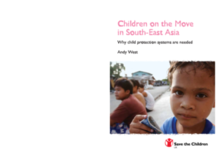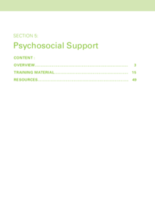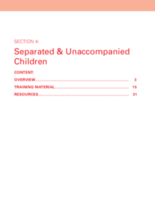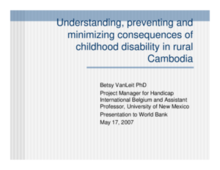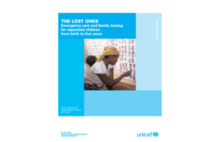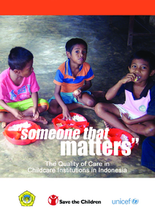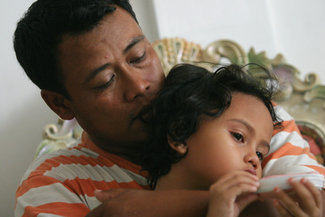

Displaying 631 - 640 of 713
This document includes the Minimum Standards on Alternative Care for Children set out by the Government of Cambodia, including both the Minimum Standards for Residential Care for Children and the Minimum Standards on Alternative Care for Children in the Community.
The purpose of this study was to gain a better understanding of the challenges and needs of children with intellectual disabilities, their families, and service providers.
This report is a shortened version of a desk review of children’s movements in the context of regional migration (Children’s Migration: Diversities, Exploitation, Participation and Protection in the Greater Mekong Sub-region of South-East Asia, available separately from Save the Children).
Contains guidance on how to develop programs to respond to the psychosocial needs of children affected by emergencies. Includes a training schedule, worksheets, and handouts.
Contains an overview of programming to prevent and respond to separated and unaccompanied children, including care arrangements. Includes a training program.
The U.S. Embassy in Vietnam points to poor regulation as the basis for denying intercountry adoptions.
This presentation given to the World Bank in May 2007 describes a study conducted in Cambodia on the situation and needs of children with disabilities and their families.
This document is intended to provide concrete advice on how to put the guiding principles common to most child protection actors into practice. Though cultural traditions and customs may require the advice to be adapted to the specific context, the authors believe that the advice provided is grounded in sufficiently broad experience to guide measures that ensure children under five are not separated when this can be avoided, and, if separated, can be reunited with their families as quickly as possible.
Based on data collected from a 2003 nationwide study, this article examines how left-behind children (specifically those aged 10–12 years old and adolescents) cope without their migrant parents.
Comprehensive evaluation of national responses and level of care standards for children without parental care in Indonesia.



